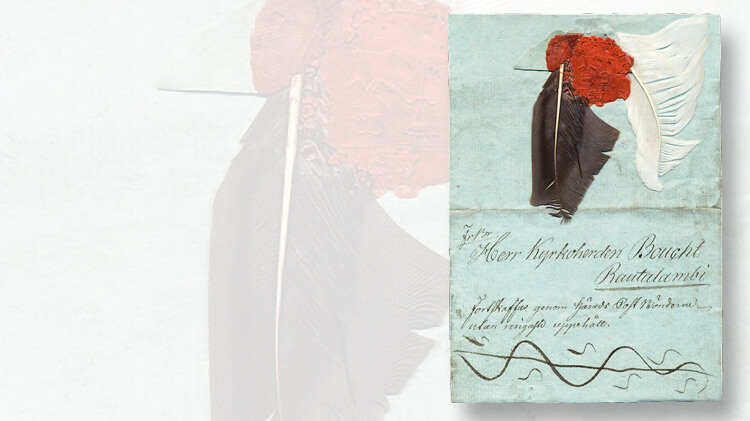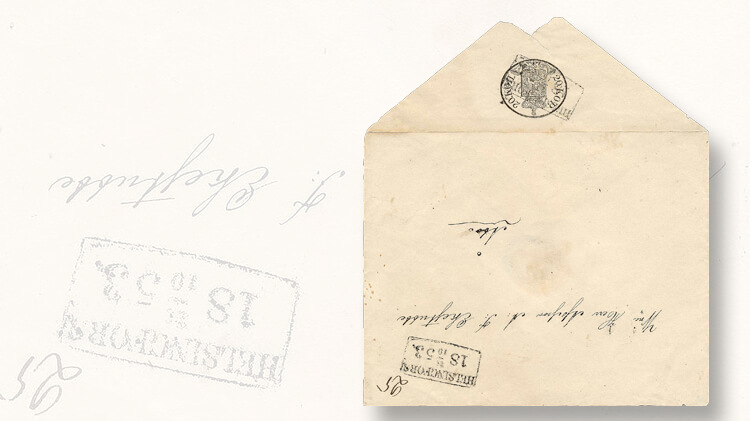Auctions
What the two feathers in a folded letter sold by Postiljonen signify
By Matthew Healey, New York Correspondent
Over in Malmo, Sweden, Sept. 30-Oct. 1, the firm Postiljonen held a series of auctions of Scandinavian and worldwide material. The sales included fascinating historical letters, including some with feathers pressed into their wax seals to denote express delivery.
A lovely first-day cover of Denmark’s first stamp, the 4- rigsbank skilling stamp of 1851 (Scott 2), was neatly postmarked in Kjobenhavn (Copenhagen) on April 1. From its €15,000 start, it was hammered down for €27,000, or about $36,000, including the 20 percent buyer’s commission that Postiljonen adds to all lots.
Numerous items in the sale were from Rolf Gummesson’s 1963 grand prix d’honneur exhibit of Finnish postal history. The sale catalog notes, only half-jokingly, that after winning this highest honor in all of philately, “then he started to seriously build his Finland collection.”
Connect with Linn’s Stamp News:
Sign up for our newsletter
Like us on Facebook
Follow us on Twitter
Gummesson, a lifelong stamp dealer as well as a collector, expanded and deepened his holdings over subsequent decades. When he died in 2002 at age 88, his son, Per, took them over. While many items of Finnish philately have Gummesson certificates, this is the first time that many “ex-Gummesson” items have reached the market.
An 1809 folded letter bore two feathers, one black and one white, pressed into its red seal. This dramatic embellishment had a clear message: the letter was sent express, and the messenger was to travel day and night until reaching the destination. It sold for $4,560.
An early example of Finnish postal stationery, an envelope with a 20-kopeck black oval indicium on the flap, was described as unique in private hands; one other exists in the Finnish Postal Museum. A gem of worldwide postal stationery, it fetched $66,600.
A rare cover bearing two of Iceland’s first stamps, the 1873 2-skilling and 8sk (Scott 1 and 3), is the only known cover with this issue sent to a foreign destination outside Denmark, which at the time owned Iceland.
Mailed in 1875 to London, the so-called Granton cover — it is endorsed “via Granton” at upper left, referring to the harbor near Edinburgh where ships sailing from Iceland to Denmark would likely have stopped — doubled its presale estimate to sell for $120,000.
MORE RELATED ARTICLES
Headlines
-
US Stamps
Oct 7, 2024, 12 PMVasiliauskas named president of Mystic Stamp Co.
-
US Stamps
Oct 6, 2024, 5 PMApgar souvenir card available
-
US Stamps
Oct 6, 2024, 4 PMFirst Continental Congress and U.N. stamps receive Scott catalog numbers
-
World Stamps
Oct 5, 2024, 1 PMCanada Post continues Truth and Reconciliation series










